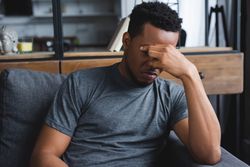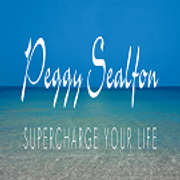A Guide to Seasonal Affective Disorder & Depression Differences

As fall turns to winter and the days subsequently become shorter and colder, some people feel sad, if not depressed, without stress techniques. Known as Seasonal Affective Disorder (SAD), it is important to distinguish between the mental health issue and depression. Learn about the differences between the conditions here to determine what’s best for your emotional and mental health in the coming months.
What is General Depression
Depression, or major depressive disorder, is characterized as feelings of intense sadness and hopelessness for an extended period. The mood disorder frequently interferes with daily life, as depressed people lose interest in hobbies, jobs, and personal relationships. Symptoms typically include constant feelings of guilt and worthlessness, insomnia or excessive sleeplessness, lethargy, weight loss or gain, and problems focusing, making decisions, and remembering details about people, places, and events.
Additional symptoms can include exhibiting no pleasure or interest in routine activities, and frequent thoughts of suicide and death. Physical symptoms can include cramps, headaches, and digestive problems—those diagnosed with depression experience some or all of these symptoms for two weeks or more.
What is SAD
 Seasonal Affective Disorder refers to depression that happens on a seasonal basis, usually during winter when there are fewer hours of sunlight. Varying melatonin and serotonin levels due to seasonal changes are also considered SAD factors. Symptoms include carbohydrate cravings and overeating, severe mood shifts and feelings of sadness, insomnia or oversleeping, lack of energy, irritability, and loss of interest in favorite activities.
Seasonal Affective Disorder refers to depression that happens on a seasonal basis, usually during winter when there are fewer hours of sunlight. Varying melatonin and serotonin levels due to seasonal changes are also considered SAD factors. Symptoms include carbohydrate cravings and overeating, severe mood shifts and feelings of sadness, insomnia or oversleeping, lack of energy, irritability, and loss of interest in favorite activities.
How Do They Differ in Treatments?
SAD treatment typically starts with light therapy, with research citing mood improvements after initial sessions. Treatment can also include cognitive therapy that helps patients develop healthy stress techniques and other coping methods. Antidepressants might be prescribed as well, or exercise regimens may be used to combat stress and anxiety. Physical activity also promotes healthy sleep and floods the brain with endorphins for positive mindsets.
Treating major depressive disorder uses many of the same methods, including cognitive behavioral therapy and antidepressant prescriptions. Medications such as selective serotonin reuptake inhibitors (SSRIs) are often used to treat mild to severe depression, and work by blocking the reabsorption of serotonin into brain nerve cells (neurons). Some patients also benefit from group therapy and exercise. While medication is necessary on occasion, personal development coach Peggy Sealfon believes that many changes can be made through lifestyle choices that improve mind-body alignment. “It’s about using our innate biology to impact emotional and mental changes. Science is now showing us how we have that power,” says Sealfon who teaches many of her clients productive strategies for reducing anxiety, stress and depression.
Learn stress techniques that reduce anxiety, trauma, and depression symptoms at Peggy Sealfon-Stonewater Studio in Naples, FL. Life coach Peggy Sealfon-Stonewater provides individuals and businesses with customized services that help them enjoy happier, healthier lives. Call (239) 821-2266 today to make an appointment or visit the website for service details.
About the Business
Have a question? Ask the experts!
Send your question

